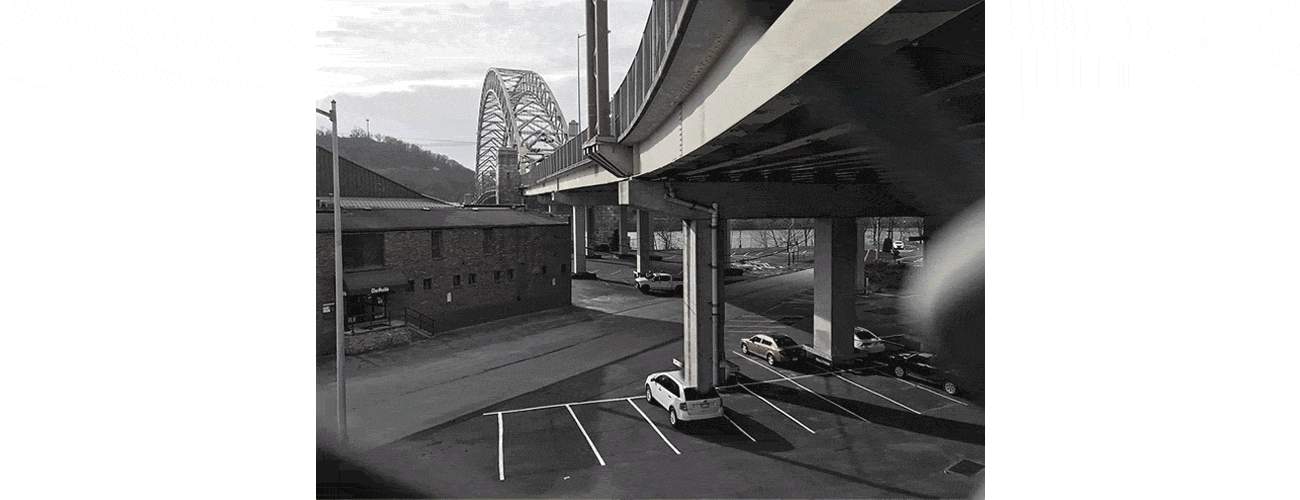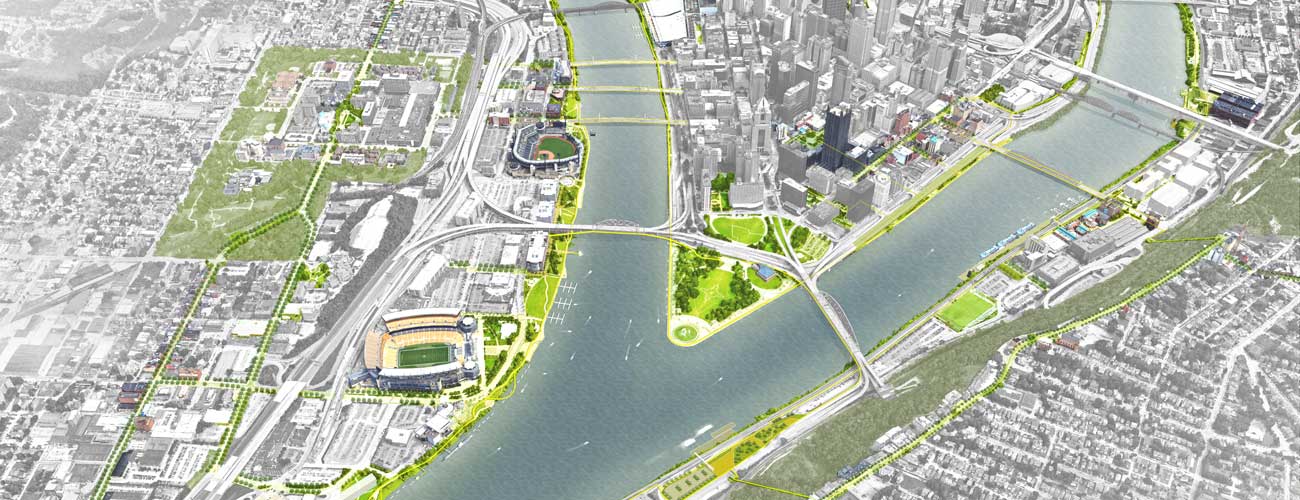Riverlife Completing the Loop Plan Charts an Equitable New Future
Pittsburgh’s waterfronts are the places where land and water meet. They are the places where the office worker might meet the fisherman; they are places where public transit can be both a bus and a kayak. Waterfronts embody rich juxtapositions. The next generation of Pittsburgh’s riverfront development will need to harness the capital to make much-needed infrastructure improvements while ensuring that the benefits of those investments accrue to all.
Riverlife’s Completing the Loop plan is the roadmap for future improvements. Completed by evolveEA with the input of thousands of river users and advocates, the plan describes a future where Pittsburgh’s miles of riverfront are accessible, clean, and connected to advance the region’s environmental justice goals. Several types of barriers, both physical and social, have historically stood in the way of this goal, from steep topography to private, scattered land ownership, industrialized and commoditized natural resources, economic and racial disenfranchisement, and weak administrative controls. The plan calls for a renewed public realm with a focus on authentic places, stewardship processes, and a coalition of people who are activated to make a riverfront for all.
PLACE. The Completing the Loop Plan outlines a strong place-based vision that brings people together. The Vision Plan describes a series of River Rooms that invite people to participate in activities along the river, creating a water-centric culture. Each River Room also has a series of amenities such as trailheads, landings, rest areas and play areas, waterfront furniture, public art, and signage, that create a cohesive experience across the diverse places in the Loop. Lastly, each River Room has anchor destinations, each with a unique identity, where public and private investment aligns for common good. Riverfront recreation and green spaces give access to the river, cafes and businesses enliven the riverfront with commercial uses, and affordable housing and commercial spaces are intentionally planned to ensure that access is possible regardless of income.
The Monongahela, Allegheny, and Ohio are transformed from rivers that divide us to rivers that are the uniting element, the seam that binds the two shores together. Each River Room is a mix of grand places and smaller escapes, balancing scale and experience, and are polished with grit to create unique identities that recall the region’s industrial history as well as the future aspirations of adjacent neighborhoods. “Neighborhood loops” are improvements to sidewalks and trails to bring people to the city’s great business districts; signage and art allow neighborhoods to (re)claim the waterfront as part of their community. Cities need green space and mobility networks that enable healthy, non-emitting ways for people to move about, connect to local attractions, and can be major outdoor destinations for a unique urban experience.
PROCESS. Unlike other cities that have a robust park system or public works infrastructure, Pittsburgh’s waterfront properties are owned by many people and care and maintenance can vary. Long-term stewardship processes are essential to sustain the progress. Completing the Loop’s recommendations are informed by a Technical Report of field assessments and both qualitative and quantitative measures that will guide maintenance and accountability. A Riverfront Scorecard was developed through this process and will be used in the future to assess progress in Connectivity, Place, Ecology, Maintenance, and Experience.
PEOPLE. Lastly, Riverlife’s commitment to equity and environmental justice will be institutionalized through the organization’s role as a convener and advocate. Through the creation of an Implementation Framework, Riverlife has set its organizational commitment to principles of equity, including (list all three here with short explanations). The Completing the Loop planning process engaged thousands of residents, business owners, elected officials, and academics, through its 12-month process. There are many projects to be completed and the document outlines Riverlife’s commitment to engage as many stakeholders as possible through inclusive and transparent processes.
It is imperative for planning professionals today to both respond to and advance cultural change. Riverlife’s Completing the Loop plan and Implementation Framework are a paradigm of how to redesign urban infrastructure with an entirely new set of principles and objectives.
Pittsburgh’s riverfront renewal will create green space and parks, mobility networks that connect to diverse destinations and opportunities for affordable housing development, and will encourage people to adopt healthy lifestyles. For Pittsburgh’s River Rooms to become great places it will take the work of many hands. The Completing the Loop plan inspires and aligns people to work together towards common goals.
The plan’s significance extends far beyond the Pittsburgh region with its creative approach to challenging urban design issues. Completing the Loop has attracted attention from the region’s top news publications as well as national sustainability and professional planning organizations.
As a blueprint to a greener city, ‘Completing the Loop’ ought to inform and guide this community’s efforts to redevelop the fronts of the three rivers that make up the city’s lifeblood. The plan should be read, studied and recommended by every foundation head, business leader, municipal planner and elected official in Pittsburgh.
—Pittsburgh Post Gazette Editorial Board



